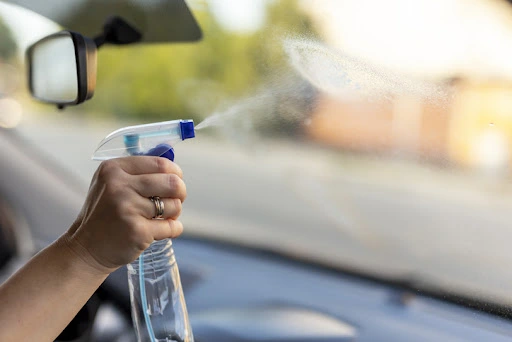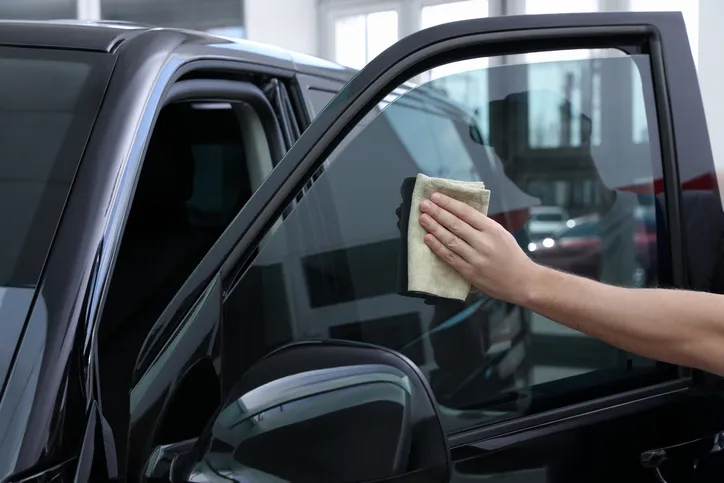Can You Use Windex on Car Windows? A Comprehensive Guide
Can you use Windex on car windows? Windows, mirrors, and other glass surfaces are frequently cleaned with Windex, a well-liked household glass cleaner. Its formulation typically includes ammonia, which helps dissolve grease and grime effectively. However, when it comes to car windows, using Windex may not be the best choice. Unlike household windows, car windows often have special coatings or tinting that can be damaged by the chemicals in Windex.
Can You Use Windex on Car Windows?

Although using Windex to clean car windows can be a convenient solution, there are safety concerns and a number of drawbacks to consider.
Pros:
Effective Cleaning: Windex is formulated to effectively remove dirt, grime, and streaks from glass surfaces, including car windows.
Convenience: Windex is readily available in most households, making it a convenient option for quick window cleaning.
Affordability: Compared to some specialized car window cleaners, Windex is often more affordable.
Cons:
Chemical Composition: Windex contains ammonia and other chemicals that may not be suitable for all types of car window materials, especially tinted windows. Prolonged use of ammonia-based cleaners can damage tint film.
Streaking: Improper application or excess product may leave streaks on the windows, which can affect visibility while driving.
Residue: Windex may leave behind a residue if not properly wiped off, which can attract dust and dirt, leading to more frequent cleaning.
Fragrance: Some people may find the fragrance of Windex to be overpowering or unpleasant, especially when used in a confined space like a car interior.
Safety Considerations:
Ventilation: When using Windex in an enclosed space like the interior of a car, ensure proper ventilation to avoid inhaling fumes.
Protective Gear: Consider wearing gloves and avoiding contact with skin and eyes when handling cleaning products like Windex.
Compatibility: Check the manufacturer’s recommendations for your specific car model and window type to ensure compatibility with Windex or any other cleaning product you intend to use.
Avoiding Tinted Windows: If your car windows are tinted, it’s generally advisable to use a cleaner specifically formulated for tinted surfaces to prevent damage. If you want professional guidance then Reliable Auto Glass is best in business.
Preparation: Gathering Materials and Tools
- Gather the necessary materials: Windex or any other glass cleaner, clean microfiber towels or lint-free cloths, and a squeegee if available.
- Park your car in a shaded area to prevent the cleaner from drying too quickly on the windows, which can cause streaks.
Application: Proper Techniques for Spraying and Wiping
- Shake the Windex bottle well to ensure the solution is properly mixed.
- Begin by spraying the Windex directly onto the car window, starting from the top and working your way down.
- Use a clean microfiber towel or lint-free cloth to wipe the window in a horizontal motion, starting from one side and moving to the other.
- Apply gentle pressure to remove any dirt or grime from the window surface.
- For stubborn spots, spray a little extra Windex and let it sit for a few moments before wiping again.
- Avoid using paper towels or newspapers, as they can leave behind lint or streaks on the window.
Polishing: Achieving Streak-Free Results
- After wiping the window with the Windex solution, use a clean, dry microfiber towel or lint-free cloth to polish the glass.
- Again, use horizontal strokes to wipe the window, ensuring all areas are dried thoroughly.
- If available, use a squeegee in a vertical motion to remove any excess cleaner and water from the window surface.
- Inspect the window from different angles to ensure there are no streaks or smudges remaining.
- Repeat the process if necessary until the window is clean and streak-free.
Can You Use Windex on Car Windows with Tint?

Explanation of tinted car windows and their characteristics:
Tinted car windows are windows that have been treated with a thin, transparent film or coating to reduce the amount of sunlight and heat that enters the vehicle. There are various reasons why car owners opt for tinted windows, including:
Heat Reduction: Tinted windows can significantly reduce the amount of heat that builds up inside the car by blocking a portion of the sun’s infrared radiation.
Glare Reduction: Tinted windows can help reduce glare from sunlight and headlights, improving visibility and comfort for the driver and passengers.
UV Protection: Tinted windows can block a significant portion of the sun’s harmful ultraviolet (UV) rays, which can help protect the interior of the car from fading and damage, as well as reduce the risk of skin cancer and other UV-related health issues.
Privacy: Tinted windows can provide privacy by making it difficult for people outside the car to see inside.
Tinted car windows are typically made from either dyed film, metalized film, or ceramic film. Each type of tint has its own characteristics and advantages, but all are designed to provide similar benefits in terms of heat reduction, glare reduction, UV protection, and privacy.
Compatibility of Windex with tinted windows:
Potential risks and considerations:
Using Windex or other ammonia-based glass cleaners on tinted car windows can potentially damage the tint film over time. Ammonia can cause the adhesive that holds the tint film in place to break down, leading to bubbling, peeling, or discoloration of the tint.
Recommended precautions for cleaning tinted car windows:
When cleaning tinted car windows, it’s essential to use a gentle, ammonia-free glass cleaner that is safe for use on tinted surfaces. Here are some recommended precautions:
Read the label: Before using any glass cleaner on tinted windows, carefully read the label to ensure that it does not contain ammonia or any other ingredients that could potentially damage the tint film.
Test in a small area: Before applying the glass cleaner to the entire window, test it in a small, inconspicuous area to make sure it does not cause any adverse reactions with the tint film.
Use a soft, lint-free cloth: When cleaning tinted windows, use a soft, lint-free cloth or microfiber towel to avoid scratching the tint film or leaving behind lint or streaks.
Spray the cleaner onto the cloth: Instead of spraying the glass cleaner directly onto the window, spray it onto the cloth first and then use the cloth to gently clean the window. This will help prevent overspray onto the surrounding areas of the car.
Avoid excessive rubbing: When cleaning tinted windows, avoid excessive rubbing or scrubbing, as this can potentially damage the tint film or cause it to peel or bubble.
Rinse thoroughly: After cleaning the windows, rinse them thoroughly with clean water to remove any residue from the glass cleaner.
Conclusion
Windex is a popular glass cleaner known for its effectiveness in removing dirt, grime, and streaks from various surfaces, including windows. However, when it comes to using Windex on car windows, caution is advised. The chemicals in Windex can potentially damage certain types of tinted or coated windows, leading to discoloration or even peeling. Additionally, prolonged use of Windex may weaken the integrity of the window seals, risking water leakage into the car interior. Therefore, it’s essential to carefully consider the type of windows in your car and their specific coatings before applying Windex. Feel free to contact us for any type of services or query like can you use windex on car windows.
FAQs
Is Windex Safe To Use On All Car Windows?
Windex is generally safe for use on most car windows. However, it’s essential to check if your car windows have any special coatings or tints that could be affected by the chemicals in Windex.
Will Using Windex On Car Windows Damage Them?
While Windex is effective for cleaning glass surfaces, prolonged or improper use can potentially damage certain types of coatings or tints on car windows. It’s advisable to conduct a spot test and refer to the manufacturer’s recommendations before use.
Can I Use Windex On Tinted Car Windows?
Care should be taken when using Windex on tinted car windows. Some tinting films or coatings may react adversely to the chemicals in Windex, leading to discoloration or peeling. Refer to the tint manufacturer’s guidelines or consult a professional for advice.
How Should I Apply Windex On Car Windows To Minimize Damage?
Apply Windex sparingly and avoid excessive spraying. Use a clean microfiber cloth to gently wipe the window surface, ensuring thorough cleaning without applying excessive pressure. Avoid using abrasive materials that could scratch the glass.
Are There Alternatives To Windex For Cleaning Car Windows?
Yes, there are alternative glass cleaners specifically formulated for automotive use. These products are designed to be safe for various types of automotive glass and coatings. They can be a safer option for maintaining the cleanliness of car windows.

